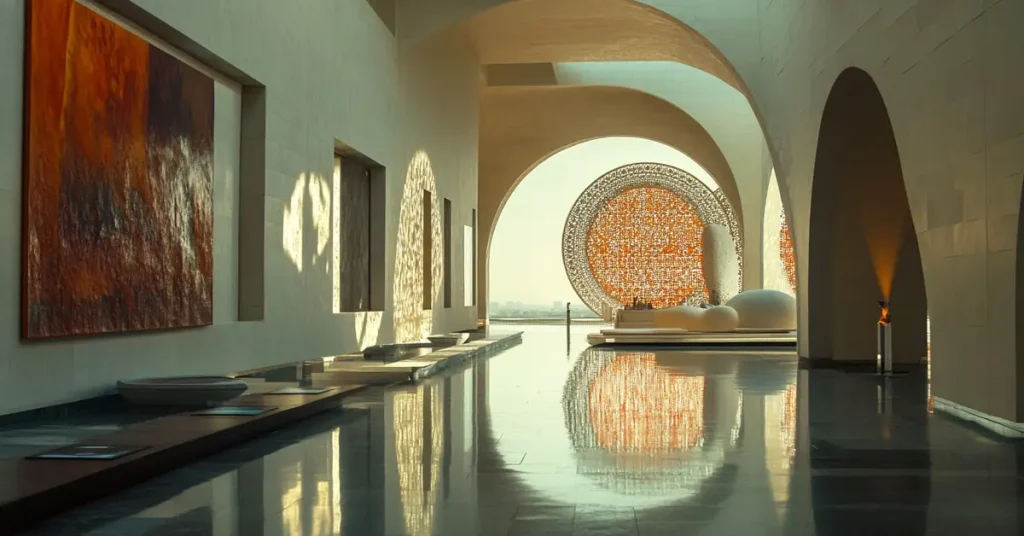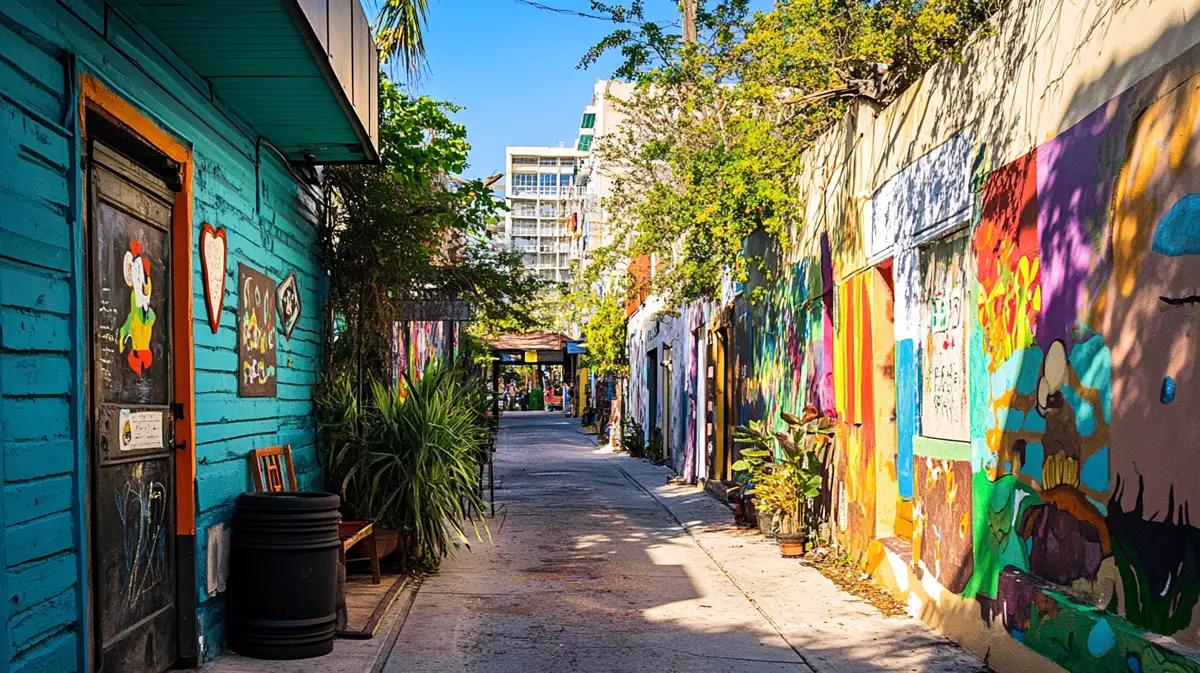
Modern city tourism goes well beyond sightseeing, offering numerous immersive experiences that immerse travelers in the heart of local culture. By becoming interested in the unique art, history and traditions of a city, one gains a deeper understanding of the life and character of a place, connecting to the local culture in a way that typical routes might overlook.
Discover the heartbeat of a city
Culture is not limited to museums or galleries. It spreads through the streets, permeates the neighborhoods and finds its expression in the daily life of city dwellers. Explore this urban rhythm by visiting bustling markets, admiring graffiti-lined walls, attending street performances and savoring local cuisine. Each aspect of the trip adds another layer to the understanding of the city's heritage, allowing you to see not only the physical landmarks but also the invisible ties that connect a community.
Many cities have their vibrant cultural centers and arts districts, where impromptu performances meet boundary-pushing galleries. Some of them, like New York, Berlin or Tokyo, are known worldwide for their multiculturalism and the unique mix of influences that can be found on every street corner. These cityscapes offer much more than snapshots; they are interactive experiences that reveal the city's own character in vibrant detail. These cityscapes offer much more than snapshots; they are interactive experiences that reveal the character of the city in vibrant detail.
A new kind of adventure: from street art to heritage walks
Urban cultural trips are for those who are curious about the hidden stories of a city and its people. Street art, for example, has become one of the most attractive cultural attractions in major cities around the world, with places like The Bairro Alto of Lisbonthe Los Angeles Arts District and Hosier Lane in Melbourne, which serve as open-air museums for works blending art and activism. These murals and installations often reflect a concern for societal issues, from gentrification to climate change. They invite spectators to think about many subjects while strolling in the street, outside of traditional places. Street art uses public spaces to help culture and new generations of artists flourish within the dynamic dynamics of the city's cultural hubs.
Heritage walks, on the other hand, offer a glimpse into the past, guiding travelers through historic neighborhoods, grand architecture, and the stories that have shaped each city's present. Cities like Paris, Kyoto and Cairo reveal layer upon layer of history, with every street corner adding to the city's narrative tapestry. For example, walking the cobbled streets of Montmartre in Paris transports you to the era of Picasso and Toulouse-Lautrec, while a stroll through the Gion district of Kyoto brings to life centuries-old traditions still preserved today.
These unique experiences set urban cultural travel apart, transforming city tours into journeys of discovery and connection. Rather than ticking off popular tourist destinations, travelers find themselves exploring cities through personal, intimate moments that connect them to urban culture on a much deeper level.
Global cultural celebrations: from London to Doha
The rise of cultural festivals and events in cities around the world has brought urban cultural tourism into the spotlight. These events, often organized by municipalities and local communities, celebrate each city's unique heritage and identity while inviting people from around the world to participate. Notting Hill Carnival in London Thanks to Doha's unique Islamic heritage, the cities open their doors to visitors, allowing them to experience a slice of local life through parades, demonstrations and celebrations of local traditions.
Qatar's capital, Doha, has seen a complete renewal of its cultural infrastructure over the past 15 years, starting with the opening of museums celebrating its rich historical heritage, such as the Museum of Islamic Art and the National Museum of Qatar . The city hosts an international film festival, which takes place at the Doha Film Institute. Several local cultural institutions, such as the Years of Culture programorganizes cultural events in Doha that include exhibitions, interactive workshops, concerts and performances in collaboration with other cultural institutions around the world. Travelers to Doha can immerse themselves in its unique cultural landscape, discovering the intersections between the city's ancient traditions and its contemporary vision.
Artistic districts and cultural hubs: the soul of urban spaces
One of the most striking aspects of urban cultural travel is the discovery of artistic districts and cultural hubs, spaces that concentrate creativity and showcase the talent of a city. These neighborhoods, often away from busy tourist areas, are ideal for those who want to truly feel the creative pulse of the city. They are home to artist studios, independent galleries and performance spaces that open their doors to travelers eager to rub shoulders with local talent.
In cities like Amsterdam, the NDSM quay is a creative haven where artists, musicians and artisans showcase their work, transforming a former shipyard into a bustling artistic community. Likewise, New York's Chelsea neighborhood is known for its art galleries that showcase the work of emerging artists alongside established names. Visiting these hubs offers a first-hand glimpse into the cultural life of the city, providing an unfiltered experience that captures the essence of urban creativity.
By walking through these neighborhoods, travelers access a side of the city that is not always included in guidebooks. These neighborhoods allow visitors to see the energy, struggles and dreams of the local community, expressed through art and culture.
Food as Culture: Culinary Explorations in Cities
No urban cultural trip would be complete without savoring the local cuisine. After all, food is a universal language that speaks to a city's heritage, geography and ingenuity. Through local foods, travelers can taste the cultural fusion that defines many modern cities. In New Orleans, for example, you'll find Creole and Cajun flavors that reflect the city's history of French, African, and Spanish influences. In Singapore, food markets are full of flavors of MalaysiaChina and Indiareflecting the multicultural roots of the city-state.
From bustling street vendors to upscale restaurants, cities offer a wide range of culinary experiences that reflect the diversity of their communities. Each dish is a story in itself, capturing flavors and techniques passed down from generation to generation. Whether enjoying ramen in Tokyo, enjoying tapas in Barcelona, or enjoying shawarma in Beirut, gastronomy invites travelers to understand cities through taste and tradition.
Why urban cultural trips are important
Urban cultural travel goes beyond capturing photographs of landmarks; it's about finding a true connection with the people and places that make each city unique. By adopting this type of travel, visitors become participants in the life of the city, discovering the sights, sounds and tastes that define its identity.
Ultimately, it's not just the memories of the architecture or monuments that linger, it's the conversations with locals, the thrill of discovering a hidden art installation or the taste of a dish prepared with love and tradition . These experiences remind us that cities are much more than their horizons; they are living, breathing communities filled with stories waiting to be discovered.
For those seeking a deeper travel experience, urban cultural trips provide a meaningful way to explore the world's cities. It is a journey that invites curiosity, respect and wonder: a chance to see cities not only as destinations, but also as homes of diverse cultures, rich histories and creative expressions that continue to inspire travelers around the world.



